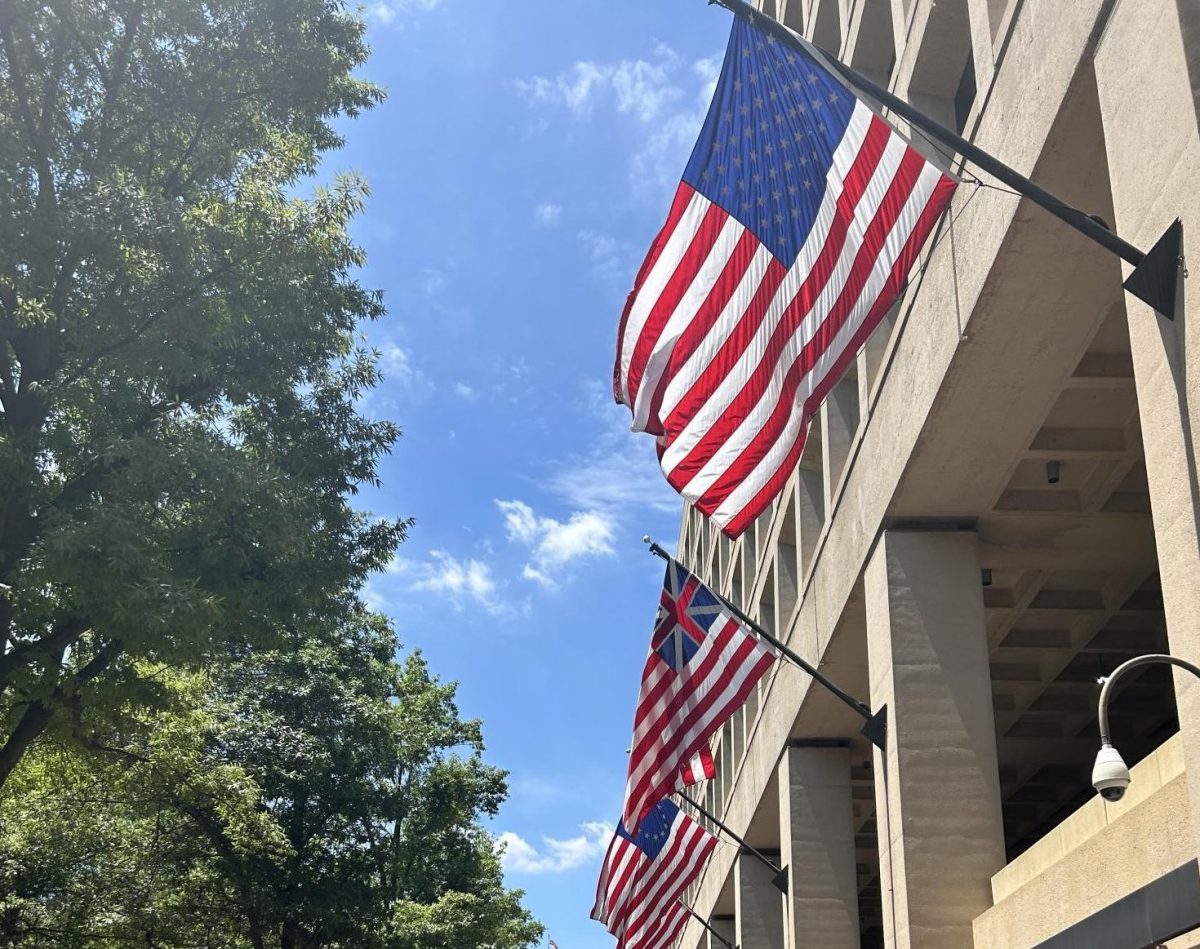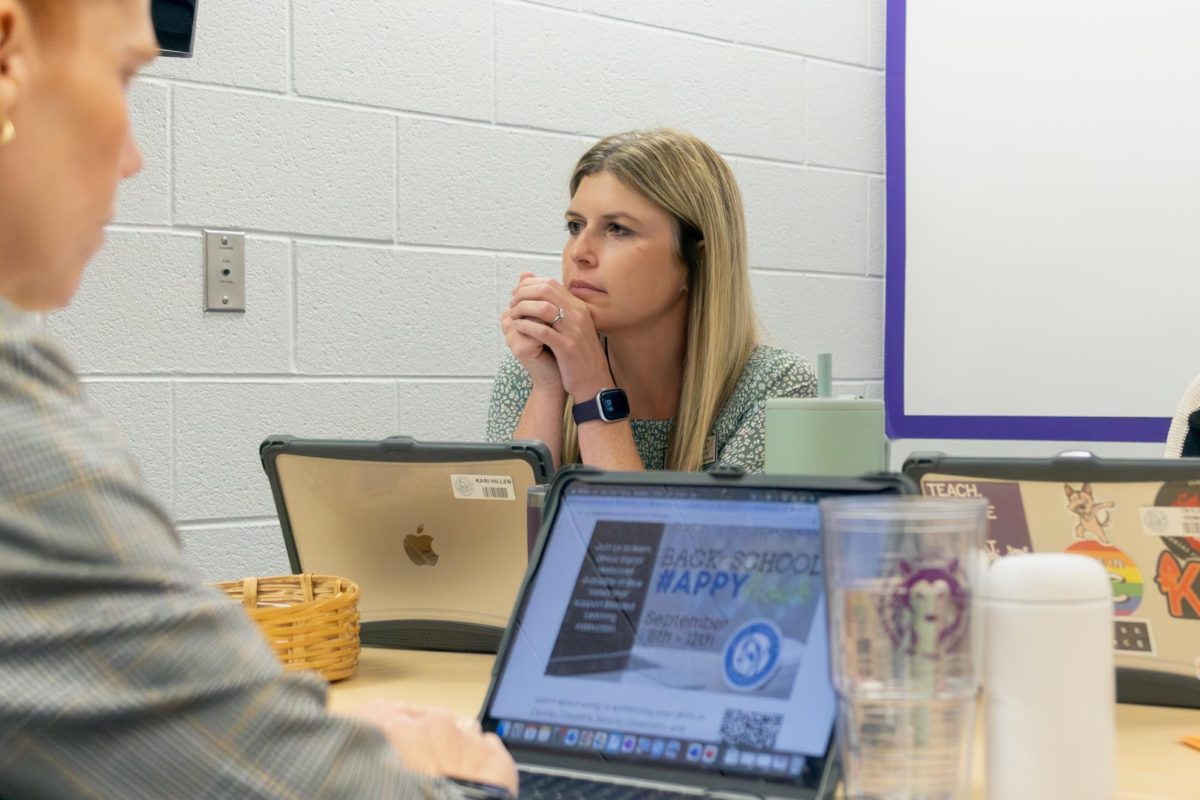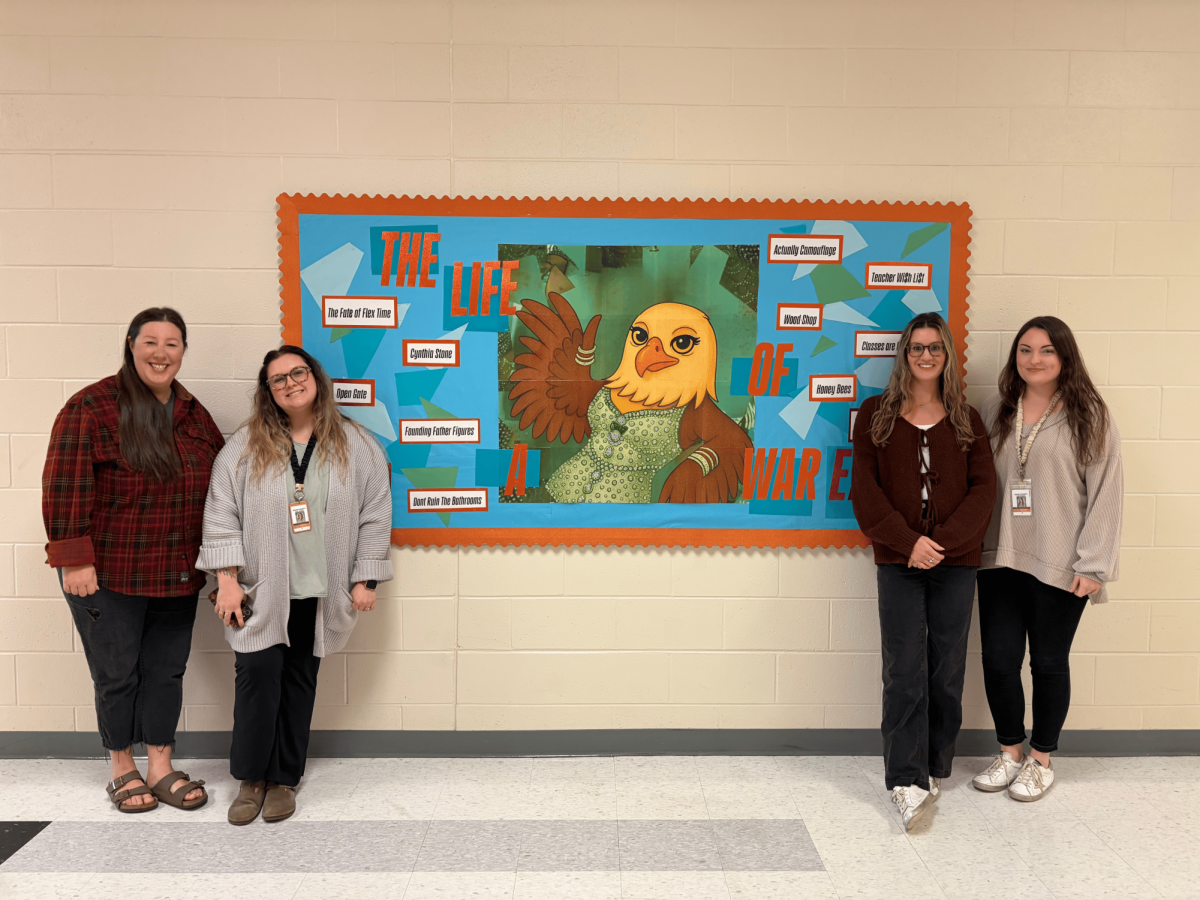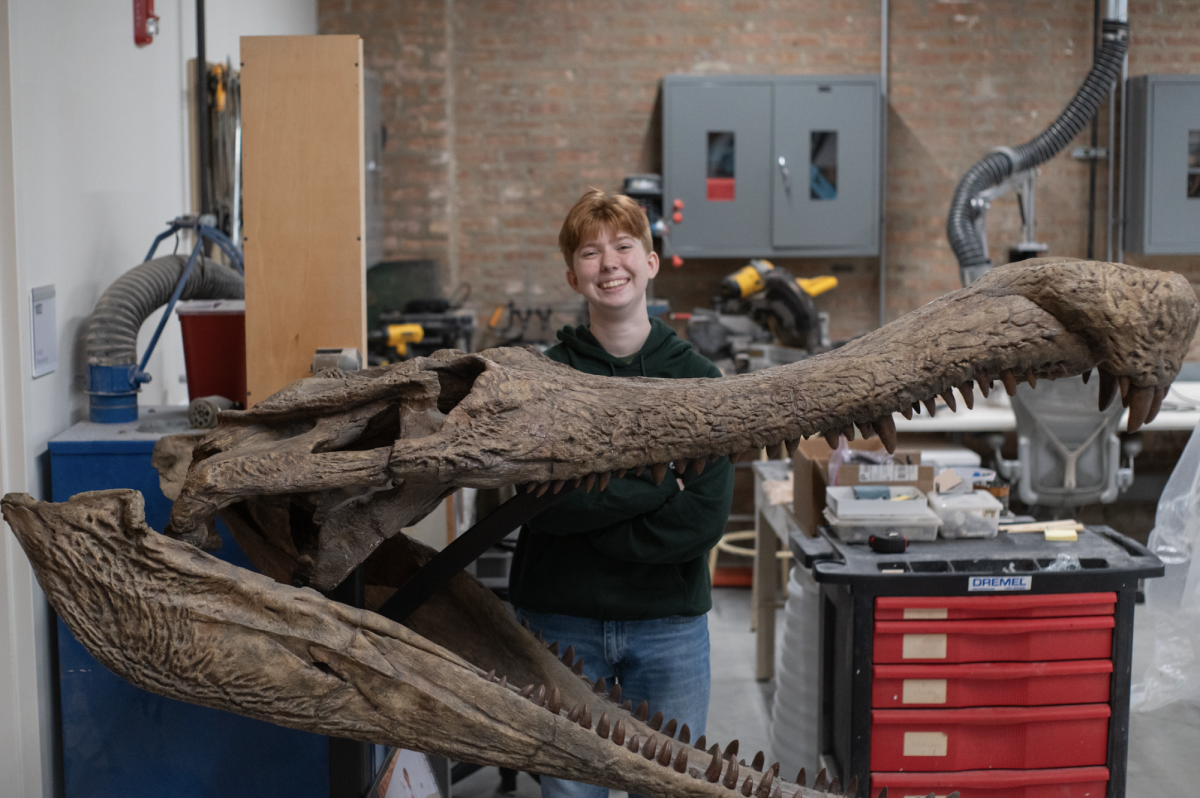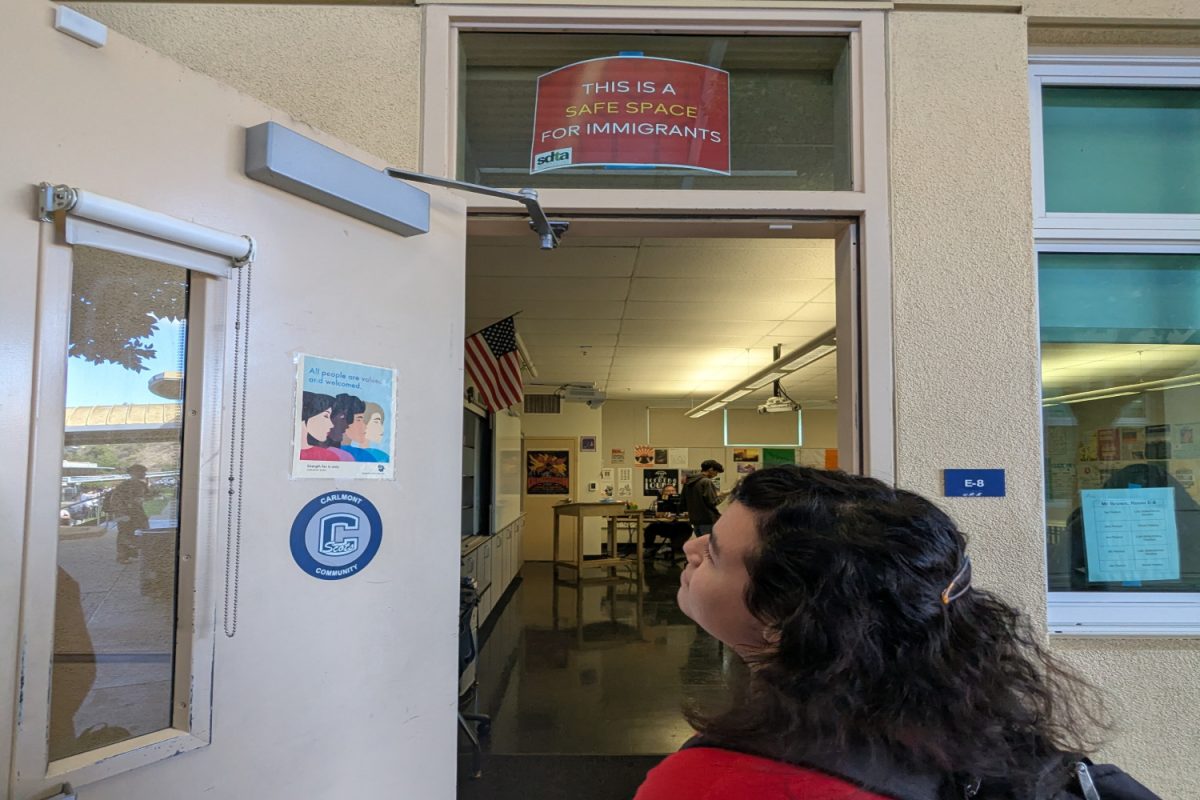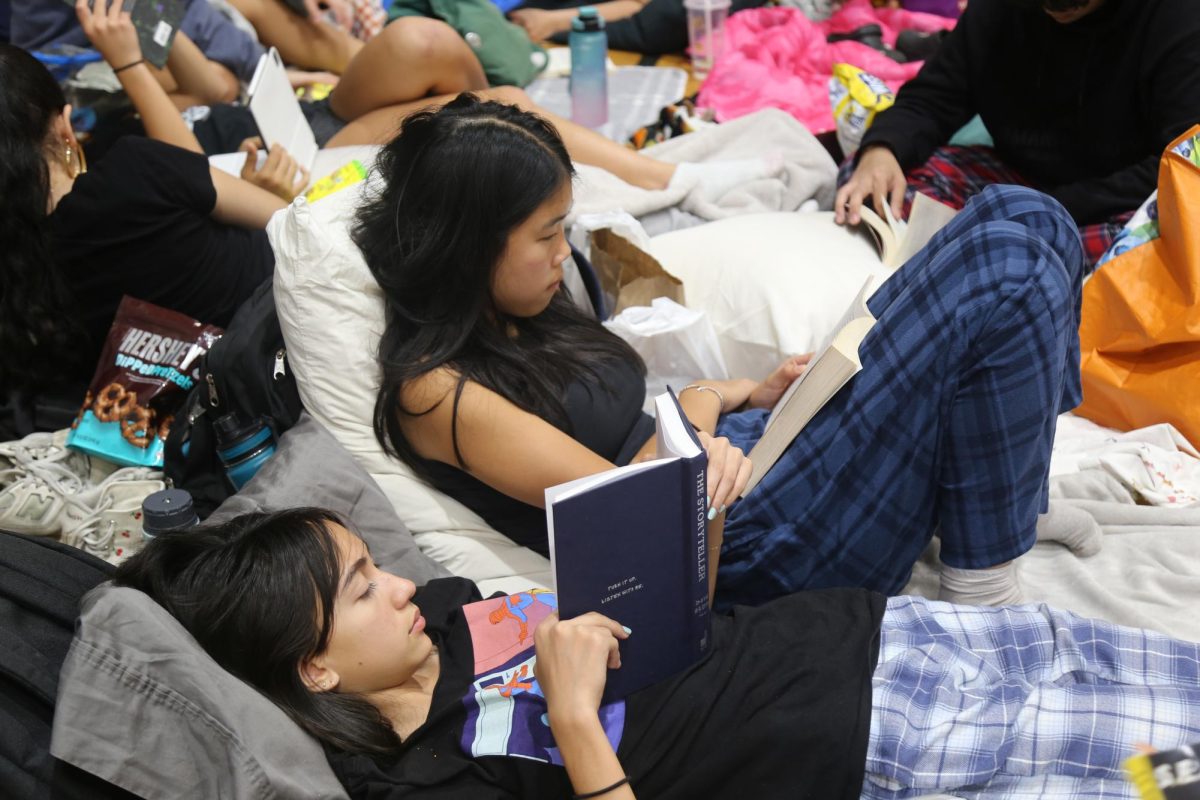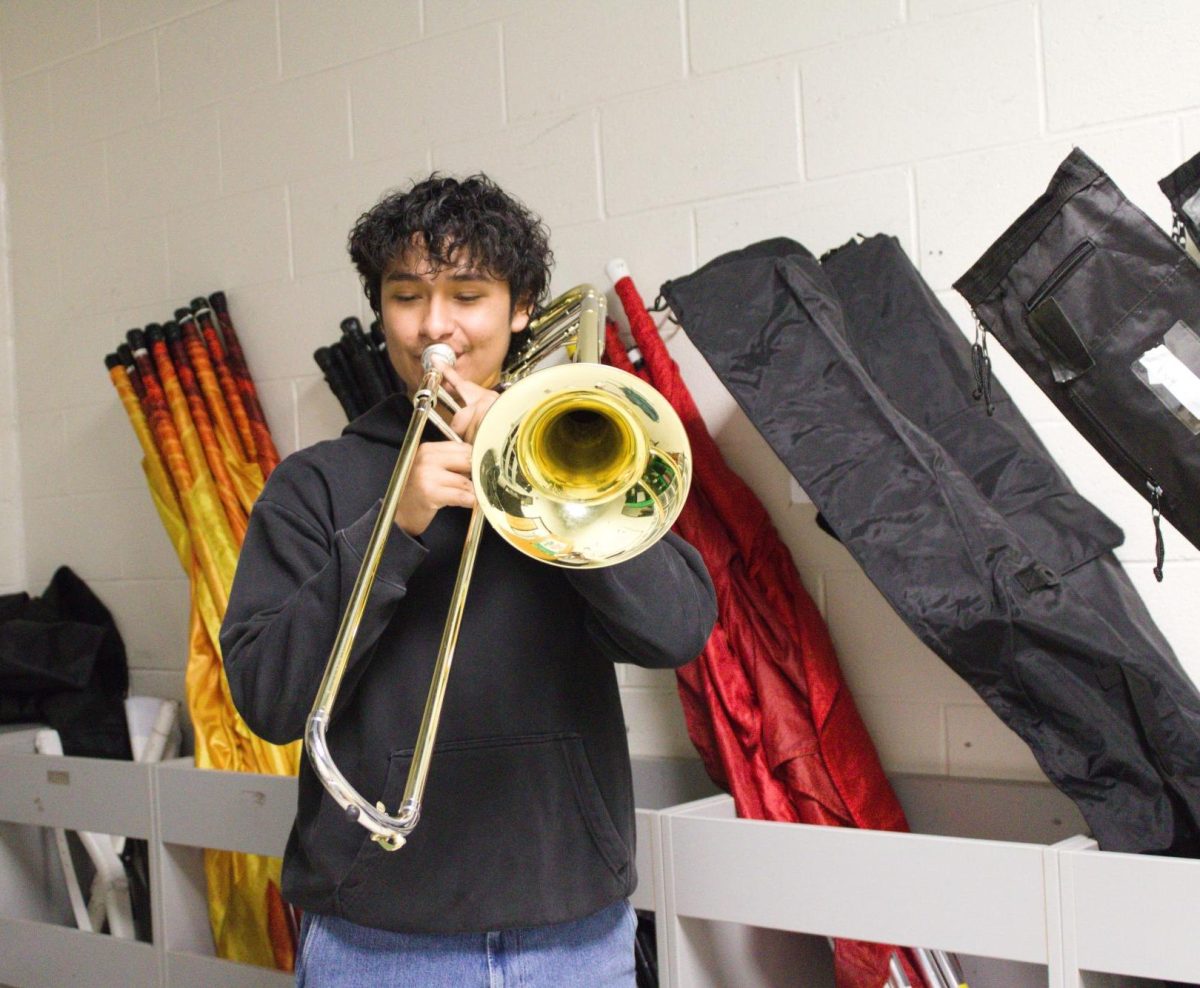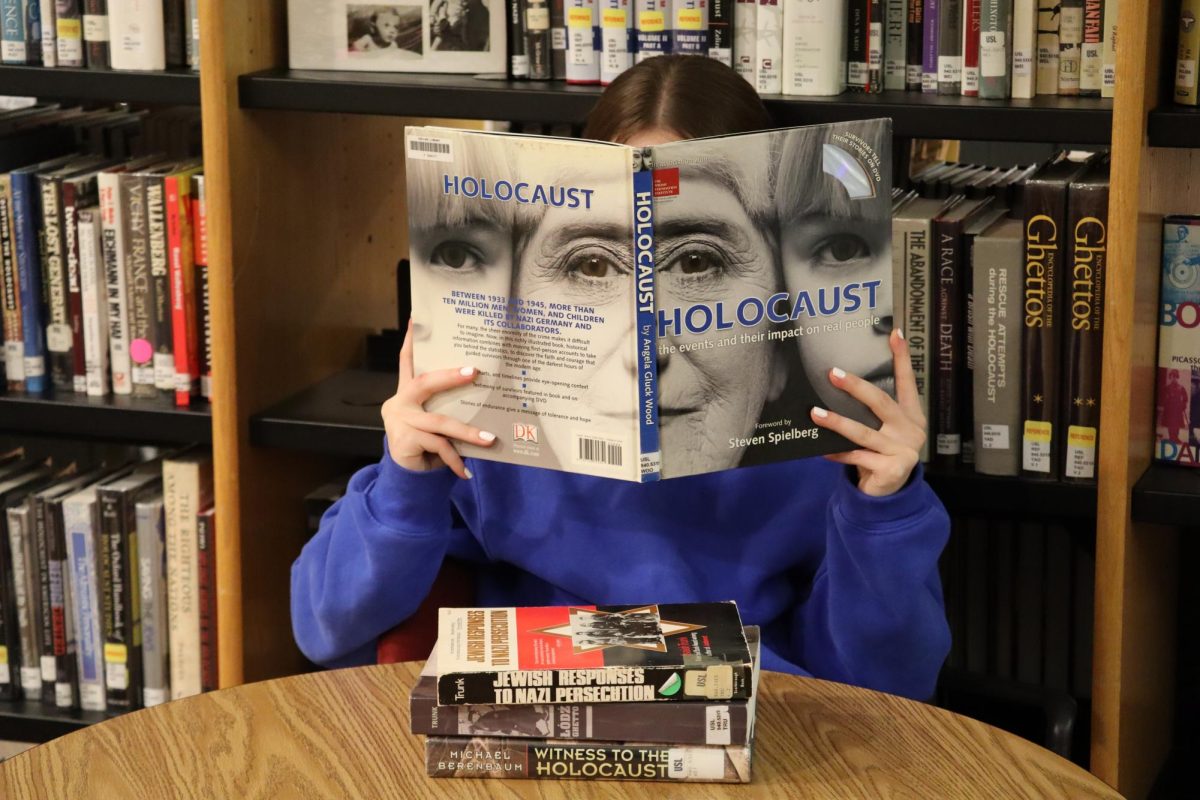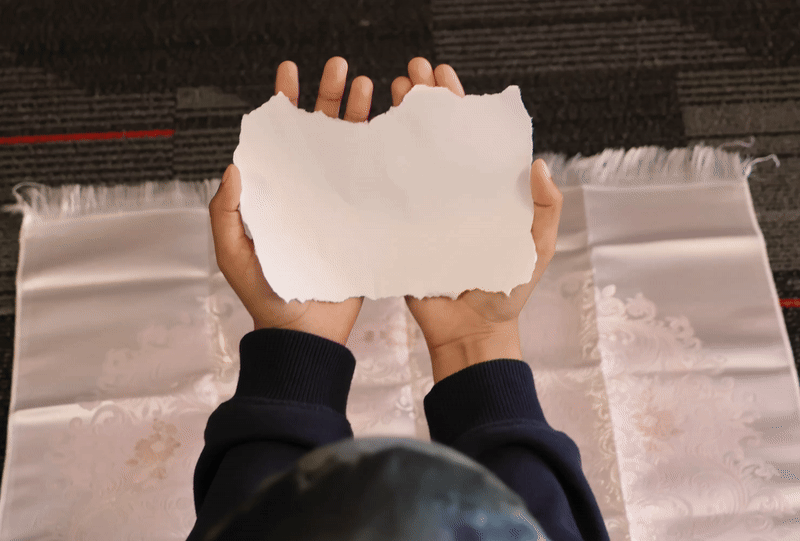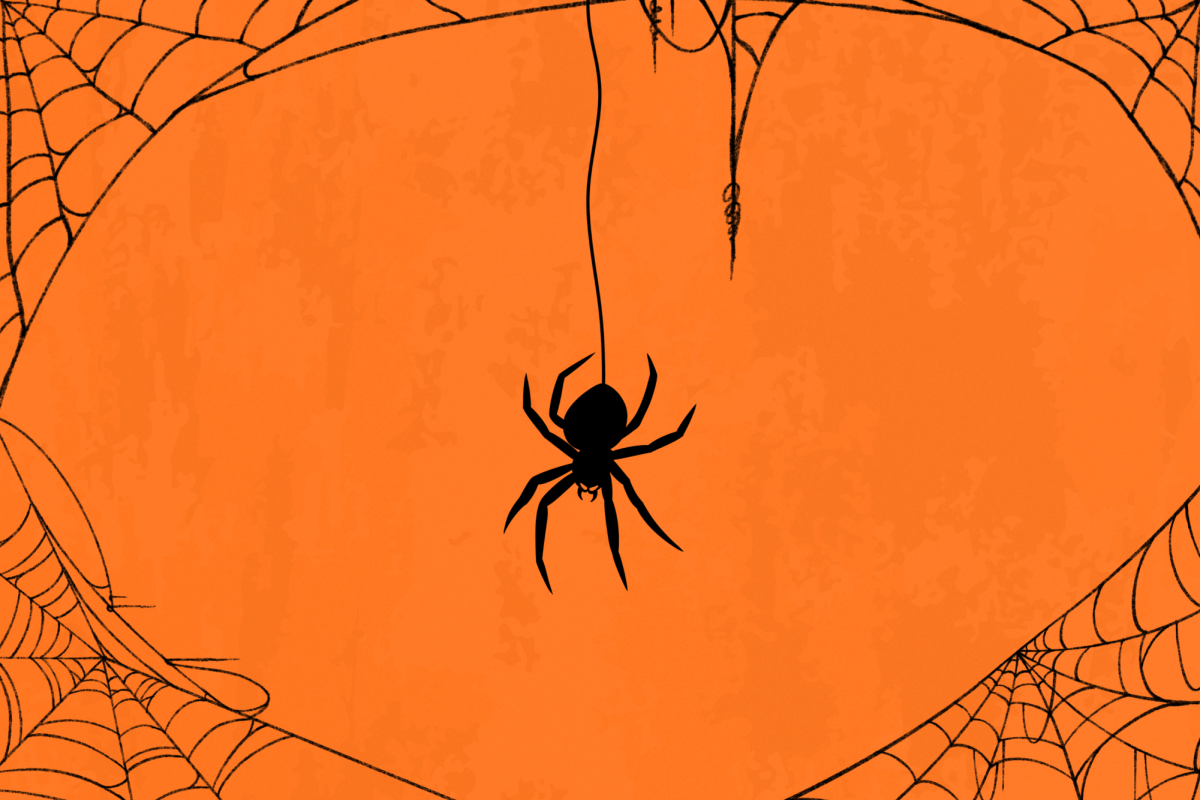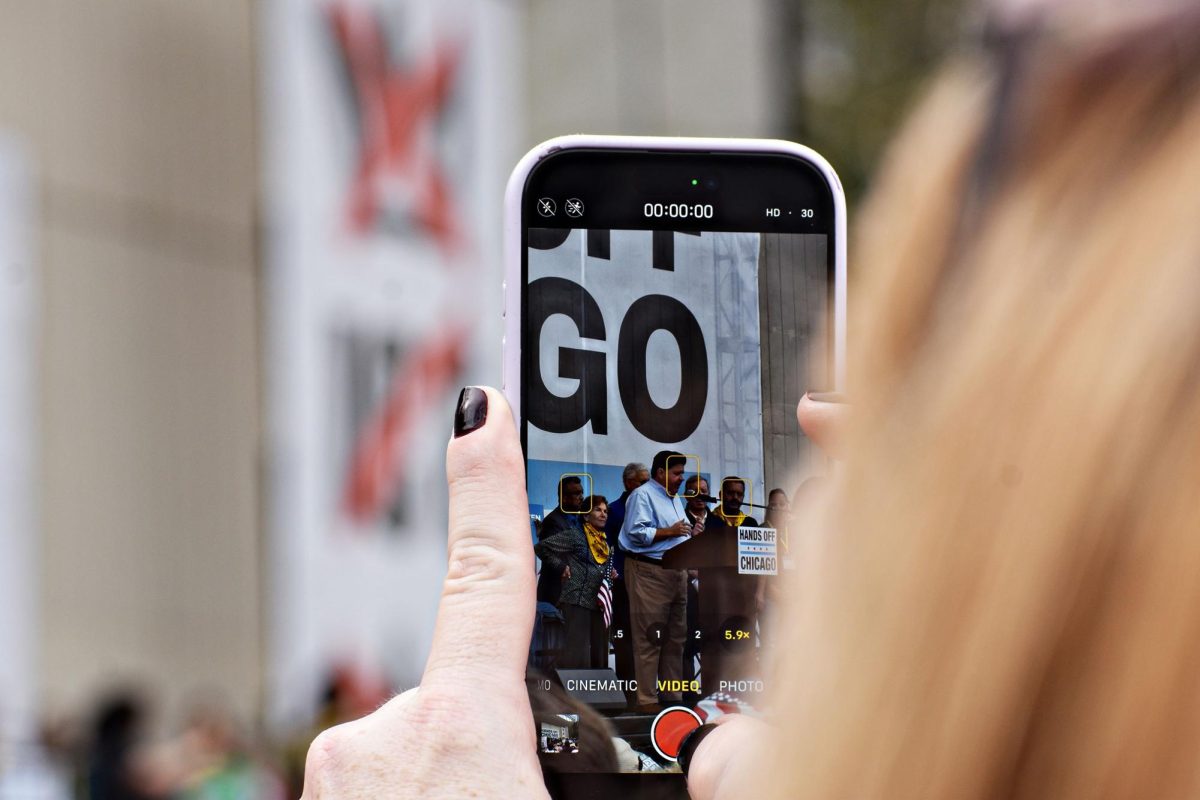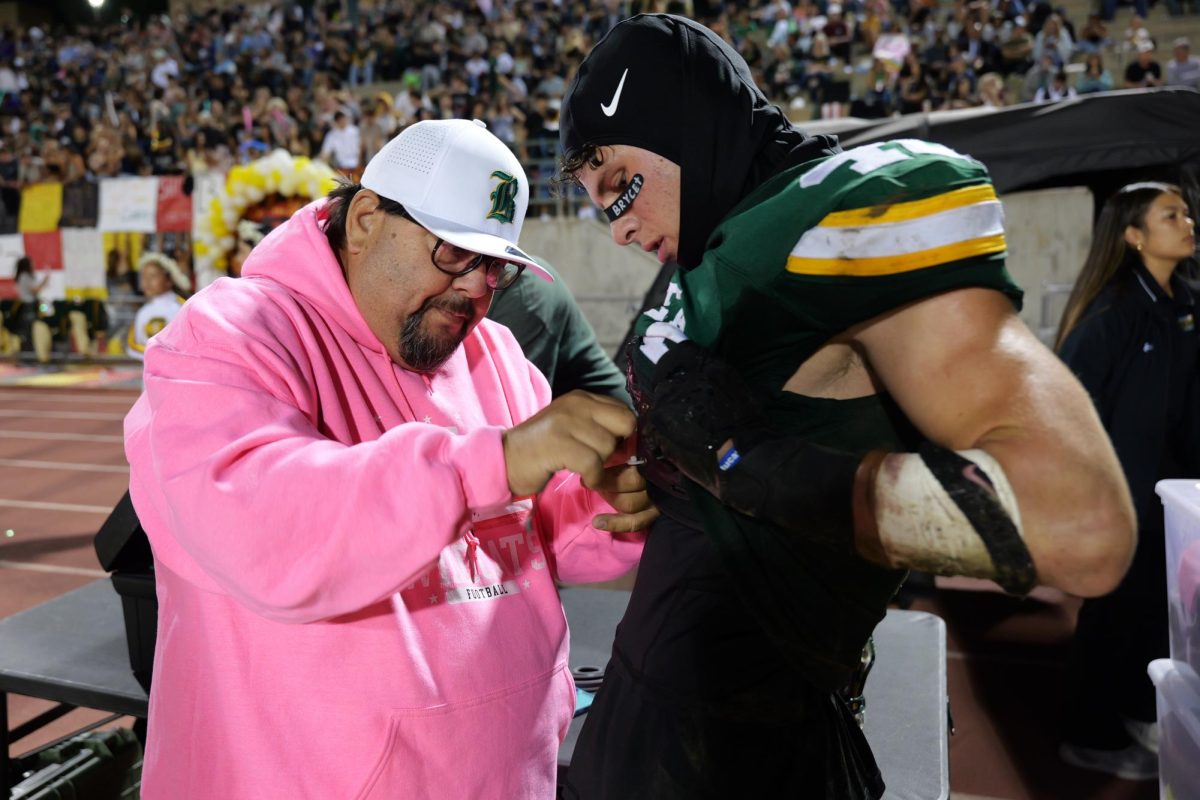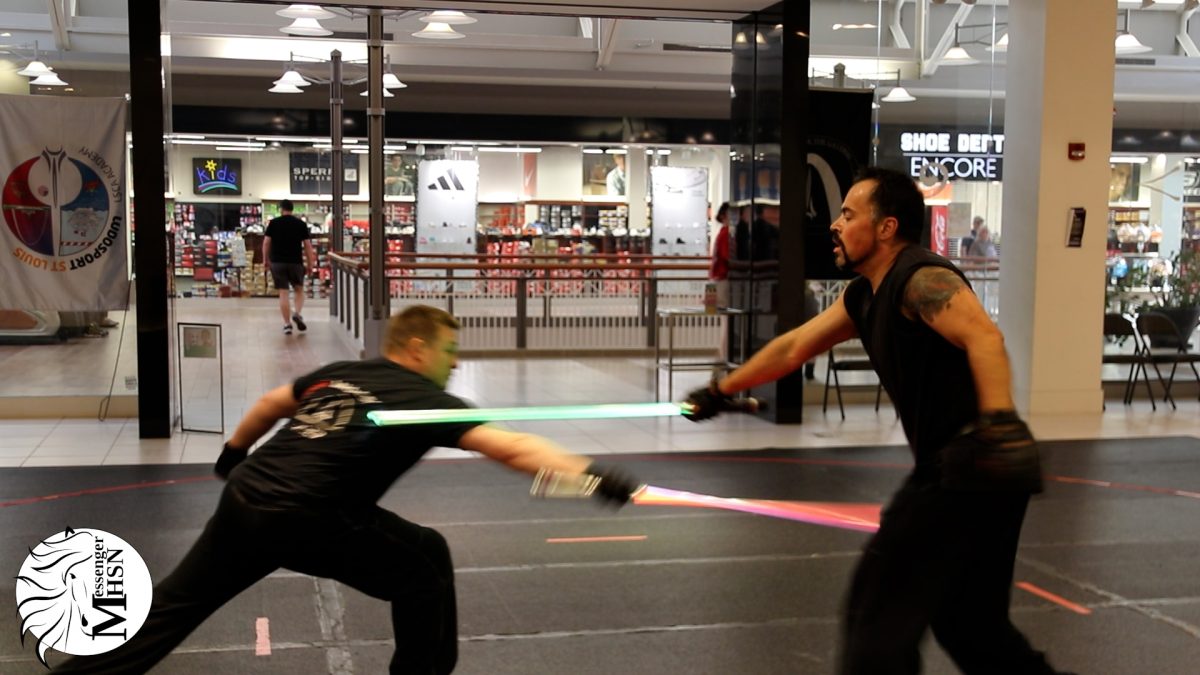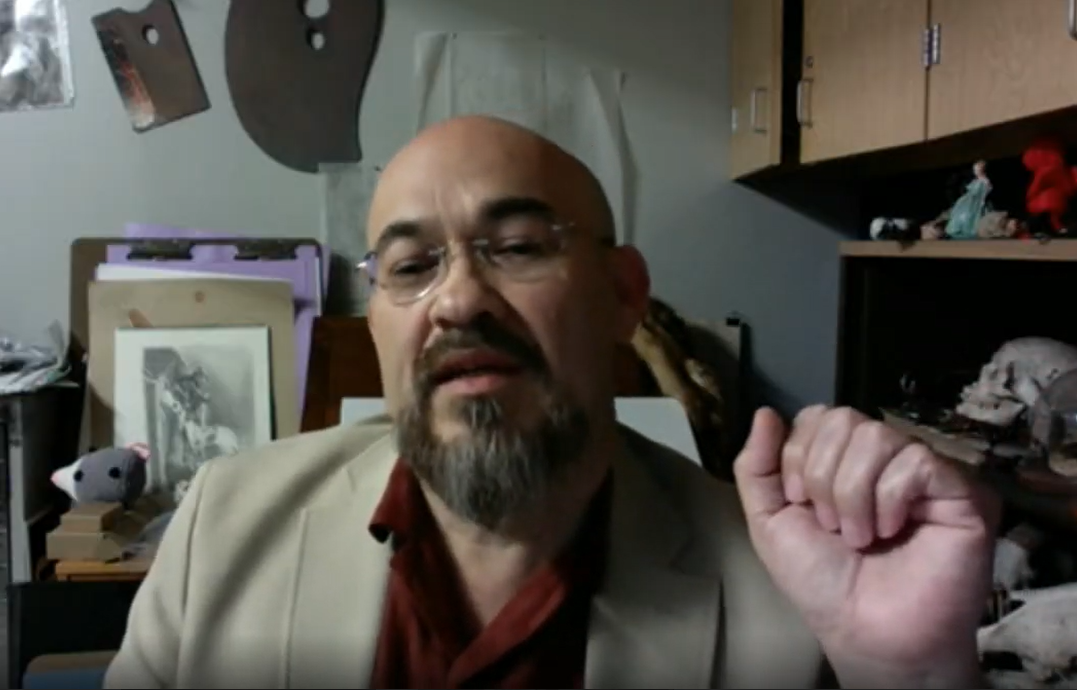On Aug. 21, the White House newsletter posted an article titled, “President Trump Is Right About the Smithsonian,” calling out some of the museum’s displayed artwork, exhibits and even online articles that focused on race, slavery, immigration, and sexuality. One of these art pieces was “Refugees Crossing the Border Wall into South Texas,” a painting by Rigoberto A. Gonzalez.
Gonzalez is a professor at the University of Texas Rio Grande Valley, where he teaches drawing and painting.
“I like to think of myself as an artist who teaches rather than an art teacher,” Gonzalez said. “I’ve been lucky that in my life I’ve been able to spend it learning about art, making art, and teaching art. I never want to do anything else.”
Gonzalez was slightly worried about how the higher-ups at his school would react to him and his work being involved in a national controversy, but he said his dean assured him he was OK. He is known for his depictions of life around the border between the United States and Mexico, highlighting immigration and the drug war that many people don’t see.
Gonzalez painted “Refugees Crossing the Border Wall into South Texas” during the COVID-19 pandemic and it became a finalist to be displayed at the National Portrait Gallery in 2022. The White House newsletter claimed that his painting was “commemorating the act of illegally crossing” the Southern border of the United States.
When Gonzalez heard what the White House newsletter said about his work, he wasn’t necessarily surprised.

“I was not surprised when I saw the painting (mentioned), because of the subject matter and also the symbolism of the objects in the painting — there’s a newspaper that says ‘Trump Impeached’,” Gonzalez said. “I was glad that they found it disturbing or they were not comfortable with the piece.”
His work tries to represent immigrants, showing the reality that people face when immigrating, especially into the United States. He describes the U.S. as a culturally diverse country, filled with people that come from different places and have experienced different things.
“I think that some people have a very limited view of the American experience because of their lack of travel or their lack of intellectual interest or maybe they have just lived in one area. But the American experience is very diverse. That story depicted in the painting is as American as any other experience,” he said.
Because of the topics of his paintings and this controversy, some have labeled Gonzalez a “woke” artist, something he wasn’t comfortable with at first, but has come to embrace.
“It was just interesting because the term was more closely related to the African-American community. Their community faced a lot of struggles and I didn’t want to take away from that or insult their struggles. I didn’t want to call myself a woke artist, but because I was labeled as one, I’m now proud to say that I am a woke artist. I wear it as a badge of honor,” Gonzalez said.
In “Refugees Crossing the Border Wall into South Texas”, Gonzalez depicts a family of four climbing down a ladder leaning against the border wall between the United States and Mexico. The mother is holding a rosary and her baby while gripping the ladder. The father figure is helping them down. A little boy stands next to his father, gripping his pants.
In the painting, they all are moving from the darkness of the shadows into the light, yet there are still worried expression on their faces. In the left corner of the painting, there is a crumpled up newspaper with a headline that reads “Trump Impeached”.
“The painting has people crossing over the border wall and arriving into the United States. You are tempted to think that they are safe and that they live happily ever after. To me, the newspaper was there to symbolize the political climate that they are coming into,” Gonzalez said. “They think that they are arriving in a safe country, and it might be for others, but it is not for them. That’s why I put it there. It gives another layer to the story, giving them an uncertain future.”
The painting has even more significance to Gonzalez considering when the piece was created and what has taken place since then.
“That painting was done in 2019. I started it before the pandemic and I finished it during the pandemic so it’s been a while,” he said. “Those people, those immigrants, in the current climate they would be prosecuted by ICE. They would be going after them and sending them back.”
This is not the first time that Gonzalez has found his work at the center of a controversy.
“My work’s always been controversial. For a while, I did paintings of the drug war in Mexico. The paintings were violent. I had a show locally many years ago that the city manager shut down because he thought people should not be exposed to those images. I contacted the ACLU and they contacted the city manager, and he had to let the exhibition be opened. And one time the Mexico consulate did not like an exhibition because it presented a negative side of Mexico,” he said.
Gonzalez is an extremely talented artist. His work has been displayed in the Smithsonian National Portrait Gallery in Washington, D.C.; the Konsthallen Bohuslan Museum in Uddevall, Sweden; The Museum of Contemporary Art Branch of the National Museum in Wroclaw, Poland; and the Guildhall Art Gallery in London, England.
The road to his success started off simply as a dream. Growing up, Gonzalez always wanted to be an artist.
“I always enjoyed realism, art that had objects that you could recognize. And I was very much interested in painting growing up. There were not museums around when I was growing up, but I was just very intrigued by what painting was,” he said.
One of his biggest inspirations is Michelangelo Merisi da Caravaggio, an Italian painter in the 1600s who used dramatic lighting in the majority of his pieces, which reminded Gonzalez of his childhood.
“In the mid ’70s, there was no electricity in the part of Mexico I lived in. When the sun would go down, we would turn on kerosene lamps. The nighttime was illuminated in a very dramatic way. So when I discovered Caravaggio and his art, I made that connection to my childhood,” he said, “Childhood experience was very important in guiding me and making me choose the painting style that I do.”
He was born in Reynosa Tamaulipas, Mexico in 1973 and moved to the United States when he was only nine years old. When he moved, he lived in Texas and would sometimes travel to Ohio with his family to work on a farm. Growing up around this and experiencing all of this, he saw many things that forever inspired him as an artist.
“I would travel there (Ohio) and we worked on the farm. A lot of people that worked there were there because the farm provided them with food and shelter which they needed. These guys all had interesting stories of their journey. They had stories of how they almost died in the desert because they had run out of water and how they had to gather some money just to buy a gallon of orange juice from a convenience store. That gallon saved the lives of four guys,” Gonzalez said. “They had these experiences and stories that were like adventures straight out of a movie.”
While he said he has benefited from the controversy around his painting with people wanting to buy prints of his work, he is more concerned about the effect actions like censoring art will have on future artists and their voices. Gonzalez understands this fear and is worried that this might affect future generations of artists.
“I definitely think that it’s a possibility that a lot more people will start to self-censor their work. They think, ‘I’m not going to do a piece on this subject because it’ll get me in trouble.’”
Gonzalez is not going to be one of those artists who self-censors. The topics that he depicts in his artwork are a part of who he is, and he is not looking to change who he is just because some politicians may not like it.
“As an artist you have to be true to yourself and true to your vision. These are my ideas and I have to stick to them. I have to paint them. It is what I believe in,” he said, “Sometimes you hear politicians say one thing, and then in a few months say another thing. I’m thinking, ‘Do you guys have any backbones? You know that we record everything and we can see what you said.’ I have to be the contrast to that- to have my integrity and stand by my words.”
This story was originally published on The Oracle on September 30, 2025.


